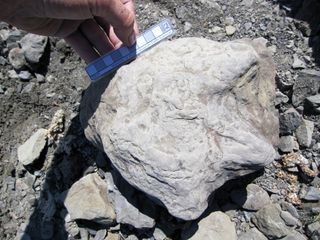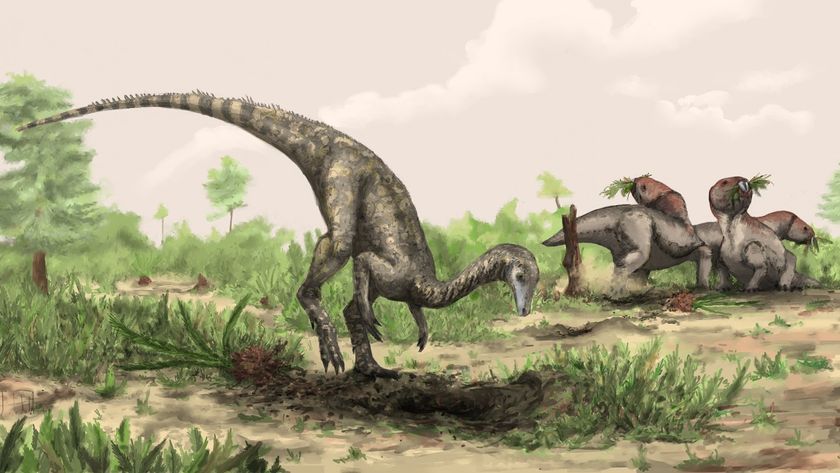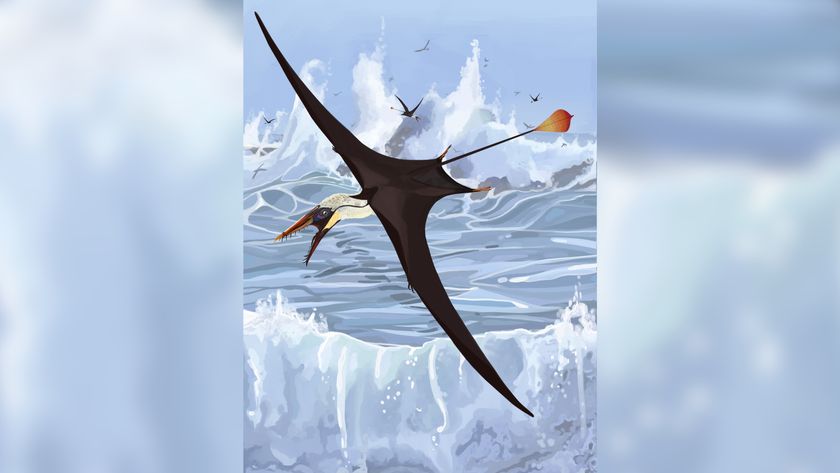Thousands of Dino Tracks Found Along Alaska's Yukon River

Researchers may have just scratched the surface of a major new dinosaur site nearly inside the Arctic Circle. This past summer, they discovered thousands of fossilized dinosaur footprints, large and small, along the rocky banks of Alaska's Yukon River.
In July, the scientists from the University of Alaska Museum of the North embarked on a 500-mile (800 kilometers) journey down the Tanana and Yukon rivers; they brought back 2,000 pounds (900 kilograms) of dinosaur footprint fossils.
"We found dinosaur footprints by the scores on literally every outcrop we stopped at," expedition researcher Paul McCarthy, of the University of Alaska Fairbanks, said in a statement. "I've seen dinosaur footprints in Alaska now in rocks from southwest Alaska, the North Slope and Denali National Park in the Interior, but there aren't many places where footprints occur in such abundance." [See Photos of the Dinosaur Tracks Along the Yukon River]
In the last decade, dinosaur footprints have been found in Alaska's Denali National Park, left in rocks that formed 65 million to 80 million years ago, during the Late Cretaceous Period. The new prints along the Yukon River might date back 25 million to 30 million years earlier, McCarthy said.
"It took several years of dedicated looking before the first footprint was discovered in Denali in 2005, but since that time hundreds of tracks of dinosaurs and birds have been found," McCarthy explained in a statement. "In contrast, the tracks were so abundant along the Yukon River that we could find and collect as many as 50 specimens in as little as 10 minutes."
Pat Druckenmiller, the museum's earth sciences curator, added that a find of this magnitude is rare today.

"This is the kind of discovery you would have expected in the Lower 48 a hundred years ago," Druckenmiller said in a statement. "We found a great diversity of dinosaur types, evidence of an extinct ecosystem we never knew existed."
Sign up for the Live Science daily newsletter now
Get the world’s most fascinating discoveries delivered straight to your inbox.
The dino tracks were preserved in "natural casts" formed after the creatures stepped in mud, and sand filled in their footprints. The result? Fossils that look like "blobs with toes," Druckenmiller said.
The researchers say they have much more work ahead of them to understand and describe their findings. They are working with local villages and Native groups to coordinate future expeditions in the region.
Follow Megan Gannon on Twitter and Google+. Follow us @livescience, Facebook & Google+. Original article on LiveScience.

Most Popular




